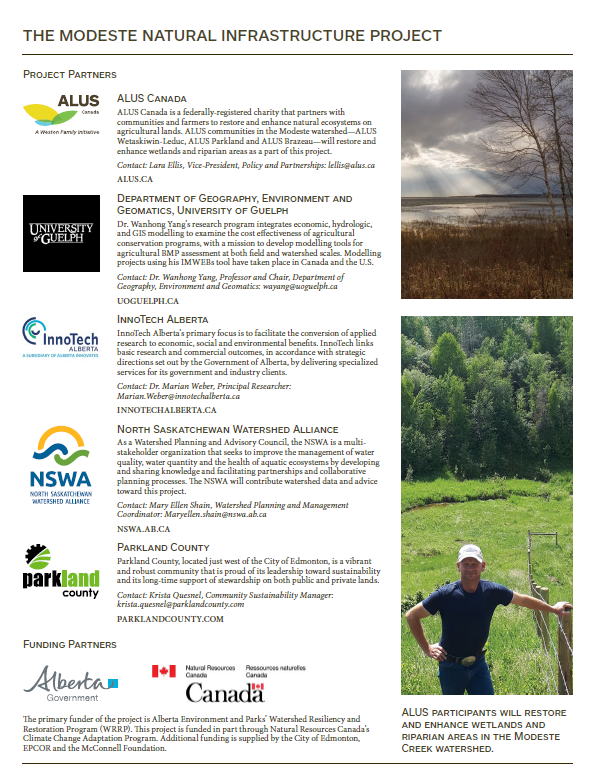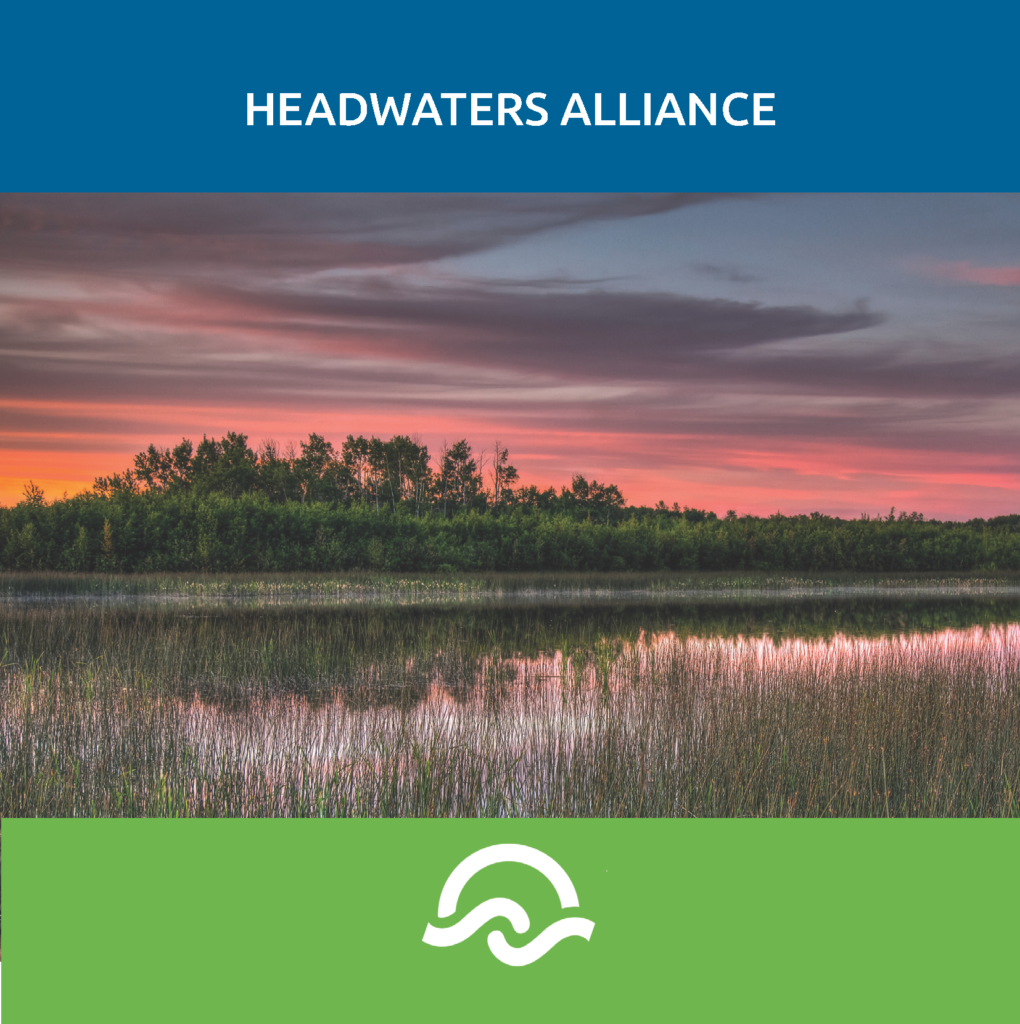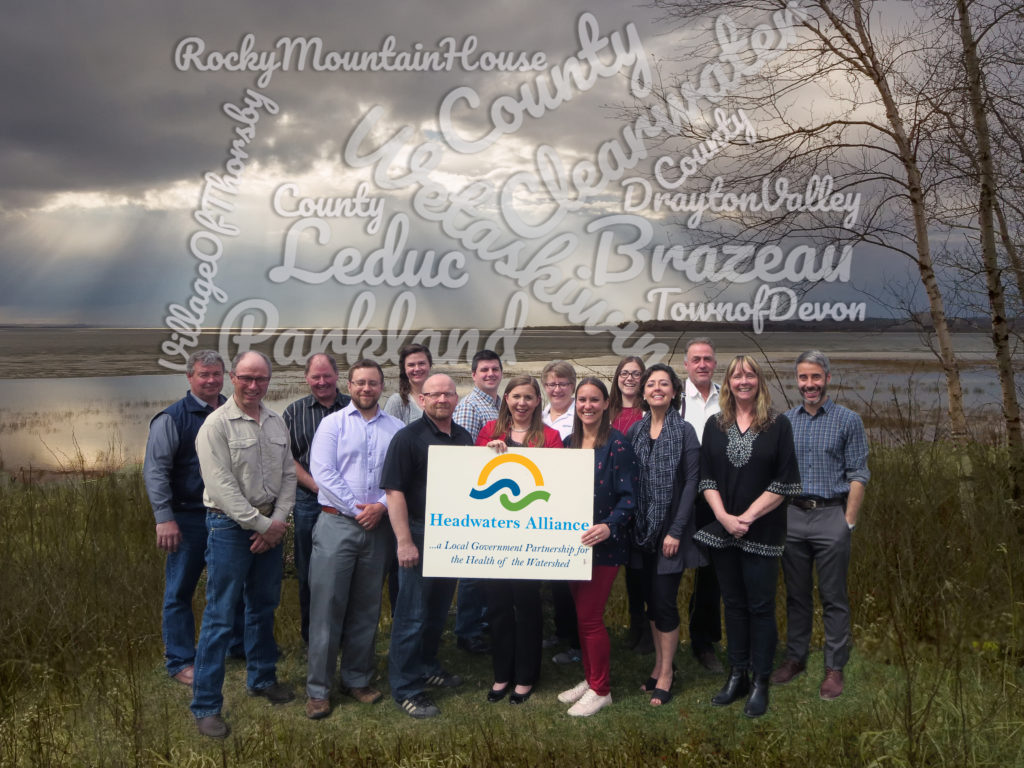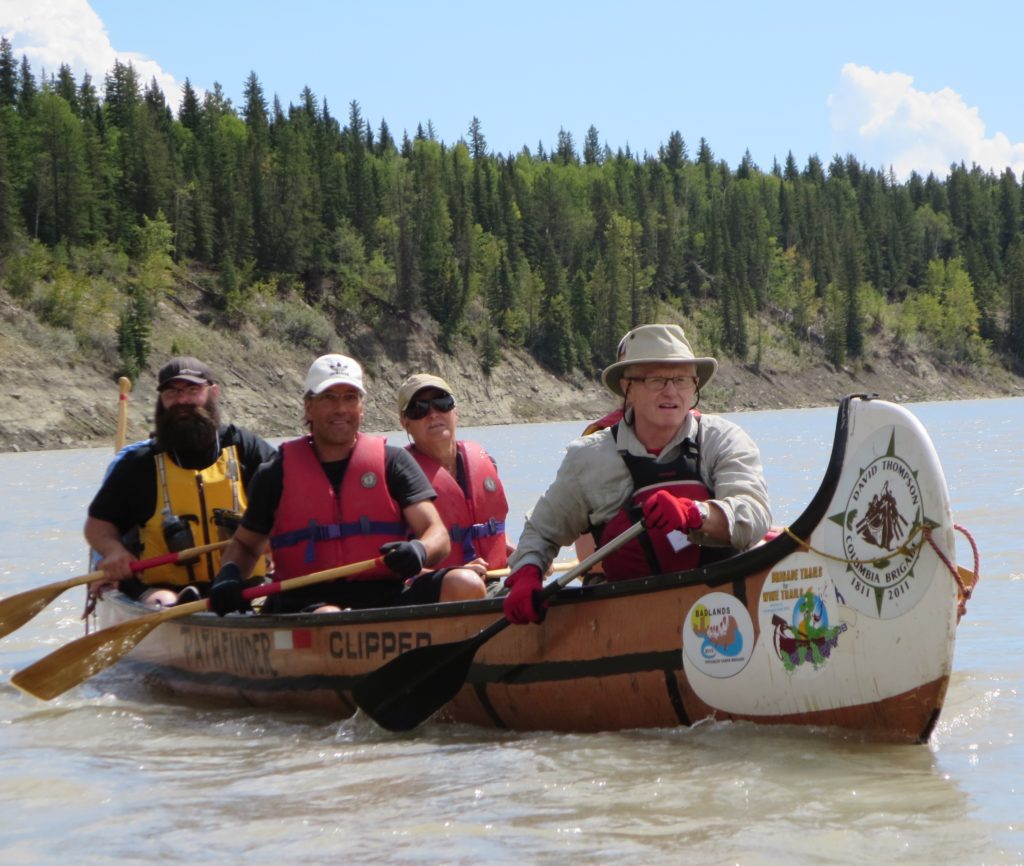The Headwaters Alliance (HA) is a municipally-supported watershed stewardship group established for the Headwaters of the North Saskatchewan River and facilitated by the North Saskatchewan Watershed Alliance (NSWA). The Headwaters Alliance, began in 2014 as a committee that brought together local governments in the western portion of the North Saskatchewan River watershed including the Modeste and Strawberry subwatersheds. The Alliance includes representatives from nine municipalities including:
- Brazeau County
- Clearwater County
- Leduc County
- Parkland County
- Wetaskiwin County
- Town of Devon
- Town of Drayton Valley
- Town of Rocky Mountain House
Working towards a healthy watershed, the Headwaters Alliance conducts their work via a Steering Committee of elected officials and a Technical Committee of municipal staff, experts, and representatives from other non-government organizations working in the area. The North Saskatchewan Watershed Alliance provides organizational and technical support.
For more information on the Headwaters Alliance check out the Headwaters Alliance Brochure.
VISION OF THE HEADWATERS ALLIANCE
The headwaters of the North Saskatchewan River are valued by the people who live and visit here; are healthy, resilient, and biologically diverse; and are being managed through collaboration between communities for a clean and abundant water supply to meet the social, economic, and environmental needs of current and future generations.
WATERSHED TOURS
“A mind that is stretched by a new experience can never go back to its old dimensions” -O.W.H.
Personal experience of the environment which we aim to protect is a significant goal of the Headwaters Alliance. Thus, we organized several experiential tours in the headwaters region, including day-long voyageur canoe tours on the North Saskatchewan River in 2016 and again in 2019. Guests included elected officials from municipalities and the province, who passed along their learnings to the Legislative Assembly. The Headwaters Alliance also hosted a bus tour of the region in 2016, inviting the public to experience several sites—from Rocky Mountain House to Nordegg—showcasing themes unique to the area.
Headwaters Alliance Strategic Plan
The Headwaters Alliance updated their Strategic Plan in 2019 and it includes goals related to:
- Organizational Sustainability
- Well-supported Initiatives
- Awareness
- Knowledgeable Stakeholders
- Adaptive Management
- Policy and Plan Alignment
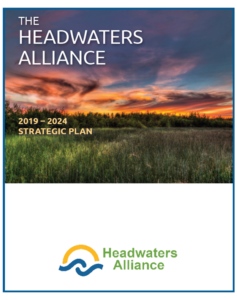
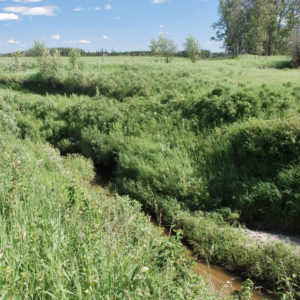
Headwaters Alliance Projects
RIPARIAN HEALTH ASSESSMENT
The Headwaters Alliance identified opportunities to fill gaps in watershed health knowledge that would have an immediate impact on their communities. The first project addressed the data gap on riparian health, with the intent to support existing stewardship programs in the area. This project assessed riparian conditions on creeks and lakes in the Modeste and Strawberry subwatersheds and identified priority areas for restoration and conservation action. This pilot project expanded into a basin wide program, the NSWA’s Riparian Health Action Plan.
NATURAL INFRASTRUCTURE MANAGEMENT PROJECT
Sometimes referred to as “natural assets,” natural infrastructure consists of landscape features— such as wetlands, riparian buffers, and forests —that improve watershed services on which human communities depend. Services can include carbon sequestration, water filtration, wildlife habitat, recreation, and protection from severe weather events. Researchers have begun to financially quantify these many benefits to society and understand the costs when natural infrastructure is lost.
The Headwaters Alliance has participated in several projects related to natural infrastructure, including the Modeste Natural Infrastructure Project (MNIP) and the Strawberry Natural Infrastructure Project. And as well, partnering municipalities have taken this research and performed further studies at a smaller scale.
The Modeste Natural Infrastructure Project is a collaborative research project between ALUS Canada, the University of Guelph, and the NSWA. This project attempted to evaluate natural assets in the Modeste Sub-watershed and provides a framework for municipalities to create a comprehensive natural asset management plan. The ultimate goal of a natural asset management plan is to demonstrate a value proposition for natural infrastructure investment from the public and private sectors. In May of 2021, a project report was published which outlines an framework for developing a cost-benefit analysis as well as lessons learned for municipalities, and agricultural and recreational areas. Read the report here:
Project Report Lessons Learned (May 2021)
This reports also provides an Economic Framework for a cost-benefit analysis that could be carried out for natural infrastructure at a sub-watershed scale, as well as lessons learned for municipalities, and agricultural and recreational areas. Nature-based infrastructure, or natural infrastructure, consists of landscape features such as wetlands, riparian buffers and forests that can improve water quality and lower the risk of flooding and droughts. This project utilized the Integrated Modelling of Watershed Evaluation of Best Management Practices (IMWEBs) model to predict changes to water quality and quantity at site, field, farm, watershed, and river basin scale.
Project Presentation (May 2021)
